How to Rosin your Violin Bow
Learn to use rosin on your violin bow for the best sound
Choose the right rosin and rosin like a professional violinist
Rosining your violin bow is easy and a great first step on the violin. Also it’s incredibly important: without rosin your violin can’t make sound.
Help, I’ve rosined my violin bow, but it doesn’t make sound!
When you just bought a violin set, the rosin is very new, shiny and smooth. This causes the rosin to glide over the violin bow without leaving any rosin. No matter how much you rosin your violin bow, it won’t make a sound on your violin.
First make the surface of your rosin a bit less smooth by treating it with sand paper. When the surface of the rosin is a bit more rough, the rosin will leave on the bow hair when you rosin your violin bow.
Buy the right rosin for your violin and climate
When you bought a very cheap violin online, the rosin sometimes is of such a bad quality that it doesn’t function and needs to be replaced.
What rosin to buy? There’s light rosin and dark rosin.
Light rosin
Light rosin is ideal for smaller instruments like the violin and for warmer climates. The light rosin is a bit harder and not so sticky. Sometimes it’s called summer rosin.
How to rosin a new violin bow
When you’ve just bought your violin bow or when it’s just back from a rehair, you need to rosing those smooth hairs a LOT. It takes a while for the rosin to be all over the bow hair and in between the hairs to make a good sound.
You could ask your violin maker to pre-rosin your violin bow. He usually does this with powder rosin and this goes faster as the rosin will apply all between the bow hairs.
If you’re doing it yourself, just rosin the whole bow hair a lot.
How to rosin your violin bow
- Tighten your violin bow
- Start at the the frog and make small movements back and forth while applying gentle pressure to the rosin. Move over the whole bow bit by bit.
- Make a couple of smooth movements over the whole bow to make sure that the rosin is applied evenly
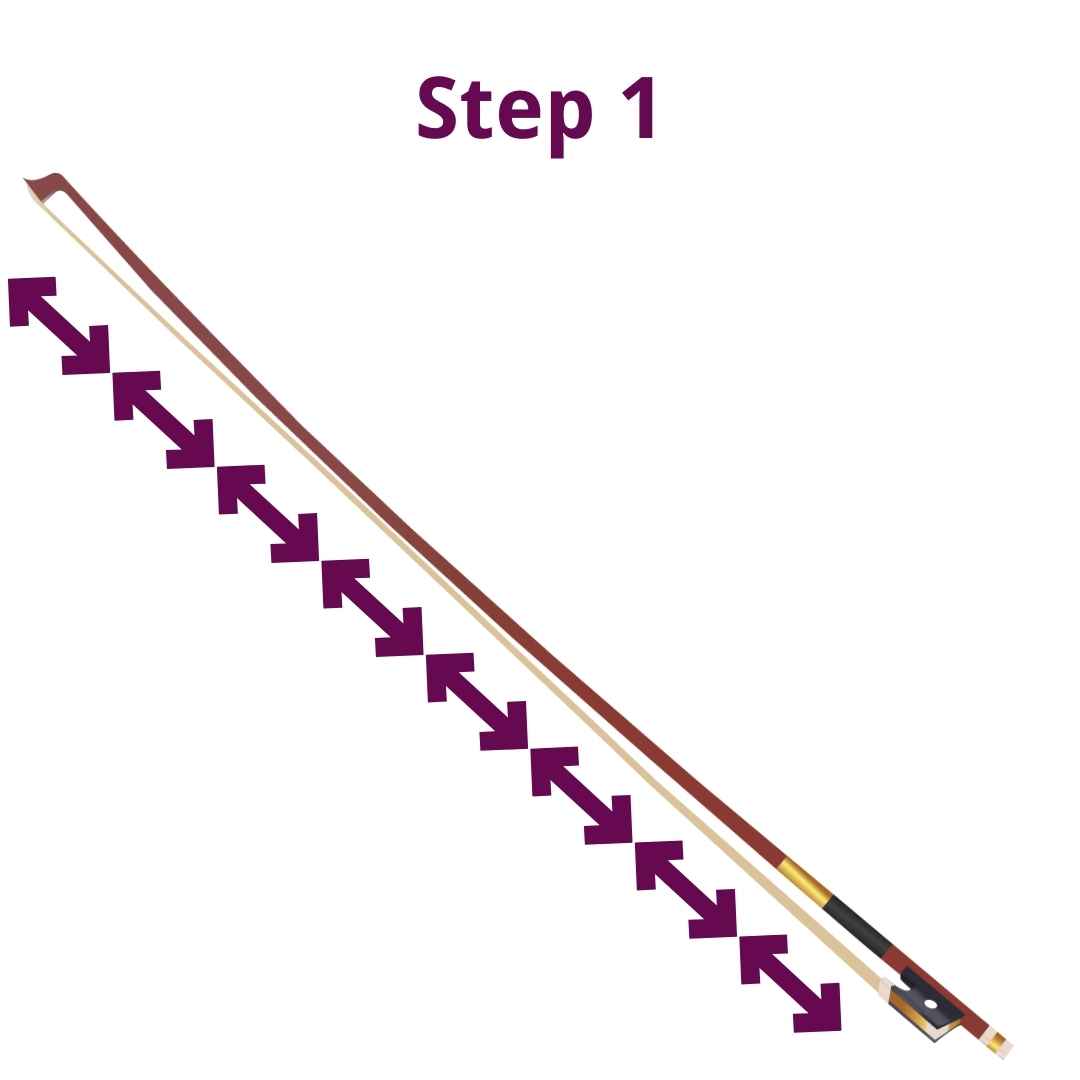
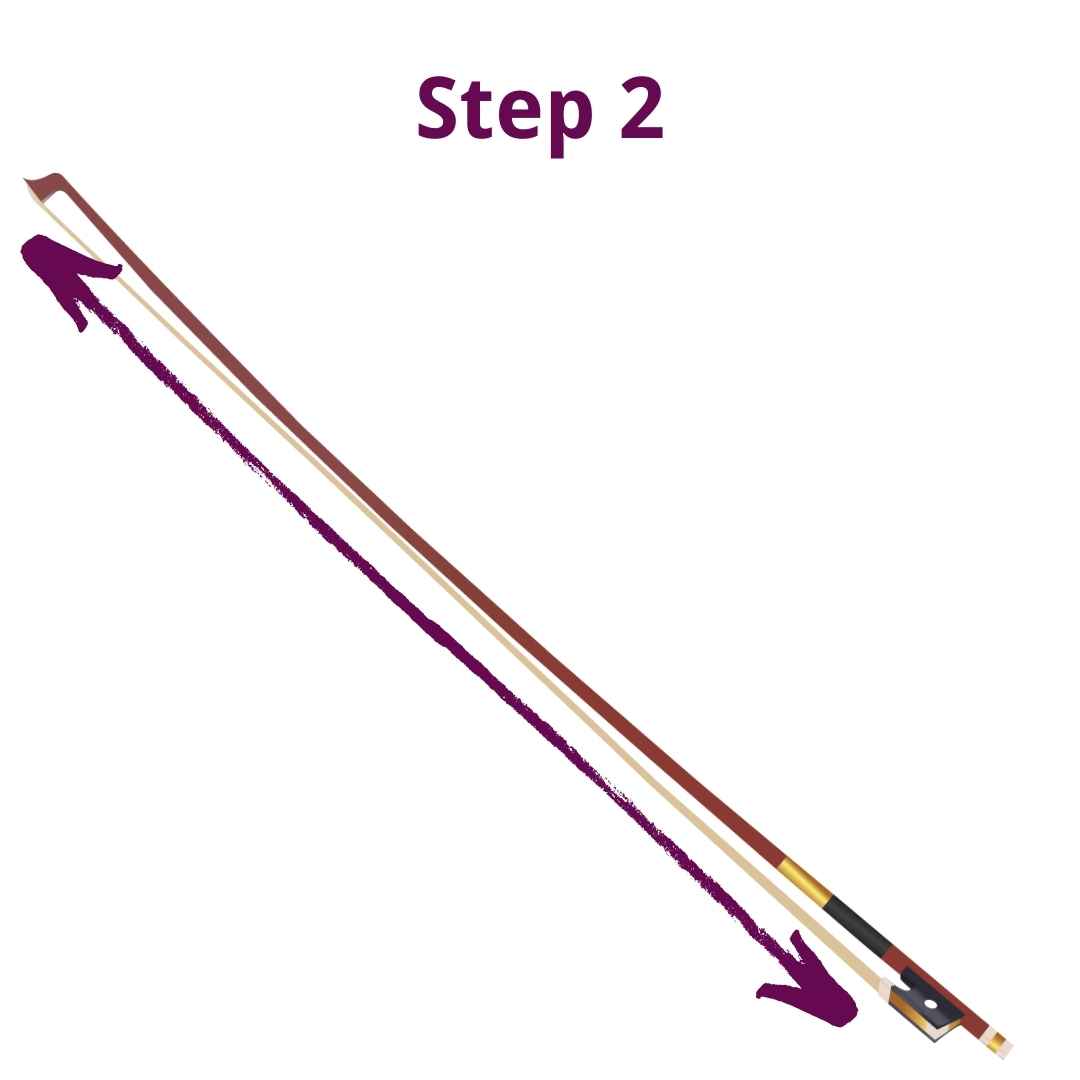
Tips for rosining your violin bow
- When you rosin at the frog of your violin bow, hold your thumb on the ferrule of the bow. In this way the rosin can’t hit the edge of the frog of the violin and break into pieces.
- Don’t forget to rosin the side of the violin bow hair for when you play with a tilted bow.
- Rotate the cake of rosin regularly, so the rosin doesn’t wear down on one spot. Your cake will last longer that way.
- A lot of players have the tendency to rosin most at the frog and the tip of the violin bow. However, rosin more where you play more. This can be the whole bow or mainly in the middle.
- At the end of your practice session remove rosin remains from the strings and the soundbox of your violin.
- Don’t leave your rosin in the sun. It can melt and become too soft to use well.
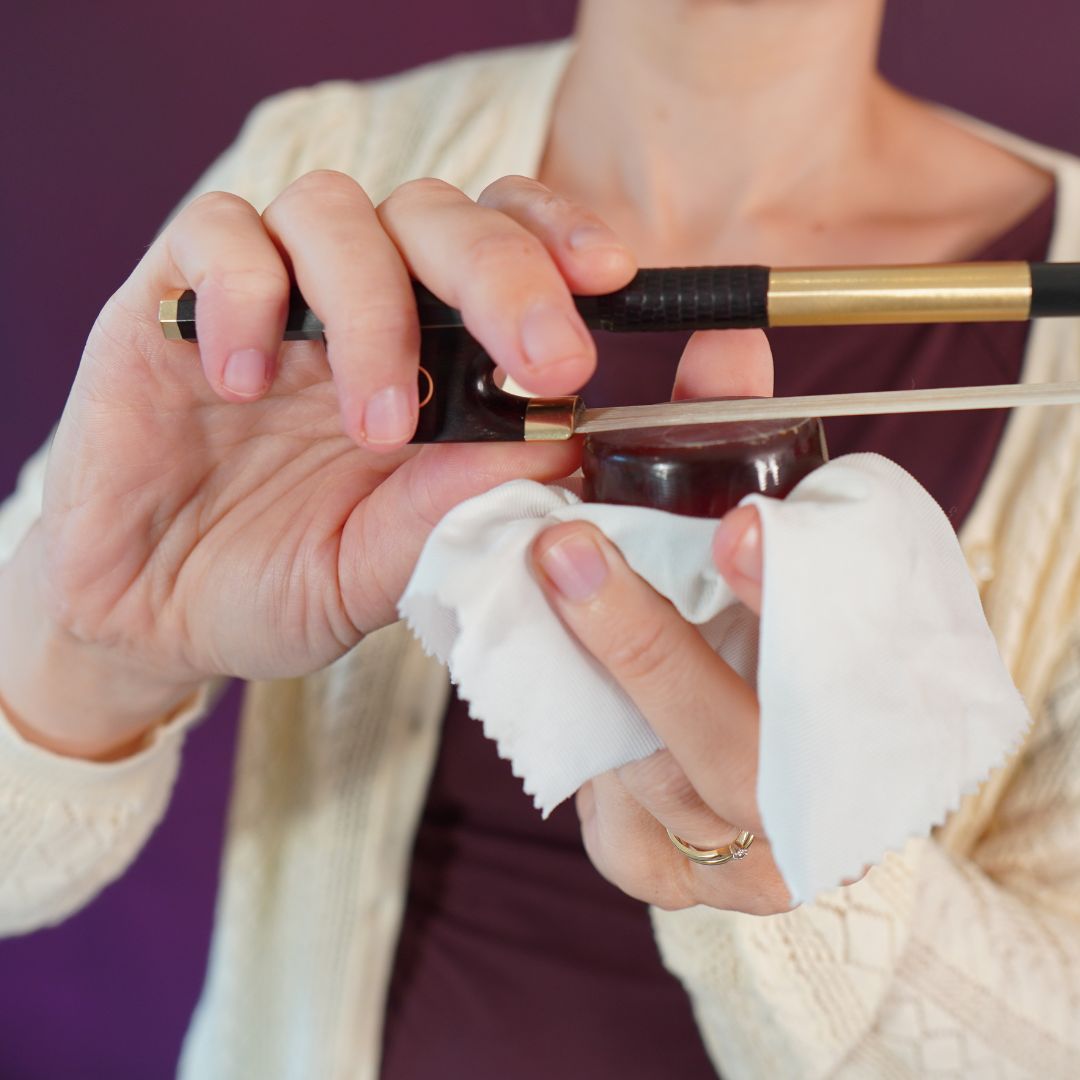
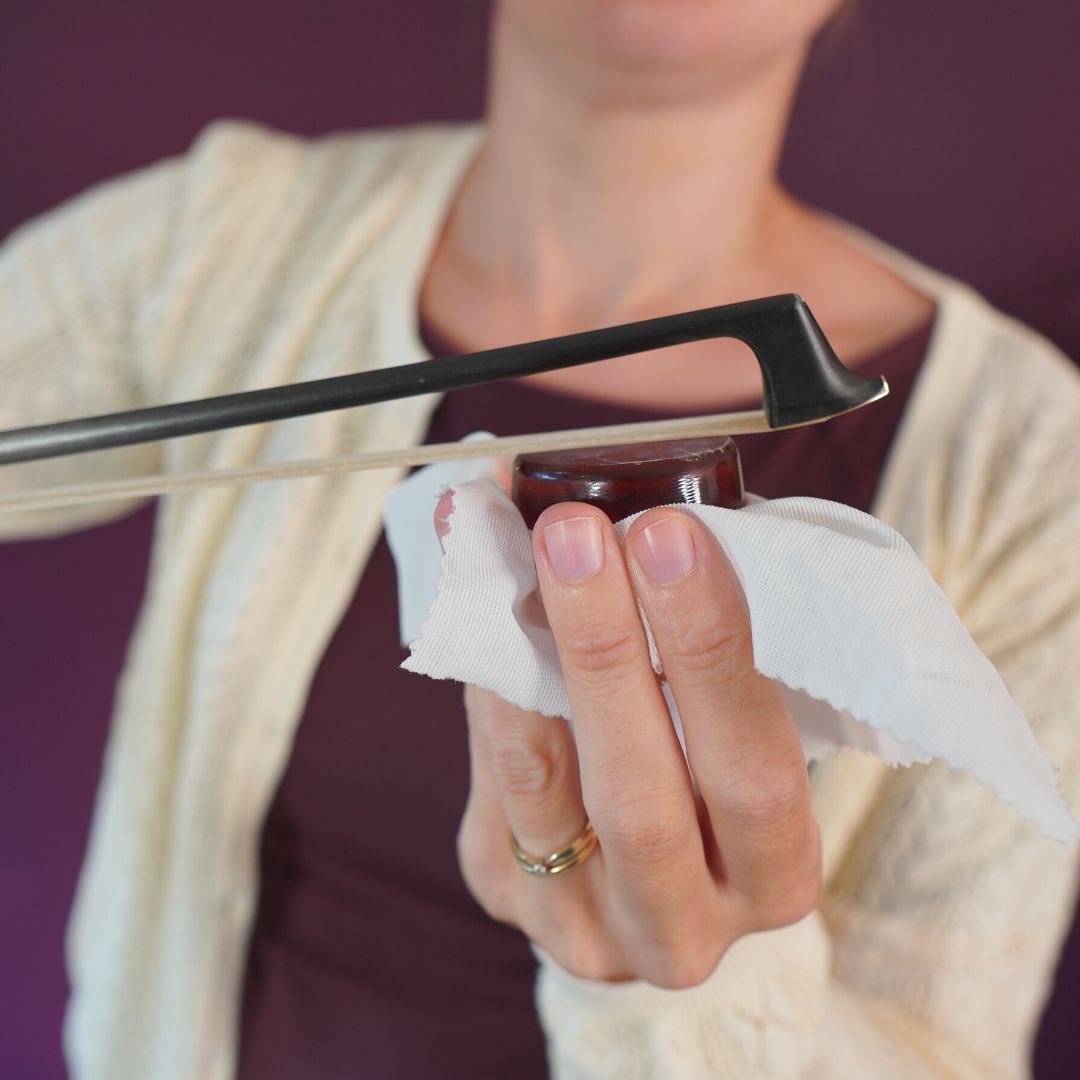
How often to rosin your violin bow
I recommend rosining your violin bow regularly, but just a little bit. In this way you’ll have about the ideal amount of rosin on your bow all the time instead of a lot just after rosining and a little just before rosining.
Rosin about every four to six hours of playing
In the end it’s personal how much you rosin. You will feel the sweet spot of the amount of rosin after some experimenting. It depends how much you rosin every time and how intensively you play.
What happens when you don’t rosin your violin bow
Without rosin the violin bow hairs are very smooth and won’t bring the strings in motion, which means you won’t produce sound.
And when you rosin too little?
You will notice that the response isn’t so good. The bow can make the violin sound, but it all feels a bit slippery and doesn’t make as much sound. Time to rosin your violin bow!
And when you rosin too much?
When you’ve overdone it, the sound will be harsh and you will see the rosin dust coming off your bow. Also bowing will feel a bit sticky.
Usually the problem will solve itself as the rosin goes off your bow while you play.
If you really want to clean off built up rosin on your violin bow hair, then watch this tutorial.
What is violin rosin made of?
The main ingredient is pine sap. Often beeswax and other ‘secret’ ingredients are added by each different manufacturer.
Hi! I'm Zlata
Let me help you find a great bow for your violin, so you can improve your bowing technique and sound quality:

Hi! I'm Zlata
Classical violinist helping you overcome technical struggles and play with feeling by improving your bow technique.
How much does violin rosin cost?
Violin rosins are sold between $ 3 and as high as $ 67.
Does more expensive rosin really make a difference?
From my experience the D’Addario rosins of around $ 4 work fine certainly in the early stages of your violin journey.
Personally I use Pirastro Evah PIrazzi Gold violin rosin that costs around $ 25. I find that it’s finer. The bowing feels smooth yet the response of the sound is good. Also you don’t have to rosin that often.
Some violinists use more expensive rosins of $ 50 or more and really believe it’s worth it.
Just as everything it’s personal and a matter of testing which rosin works best for you.

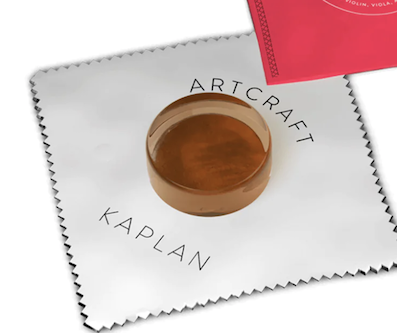
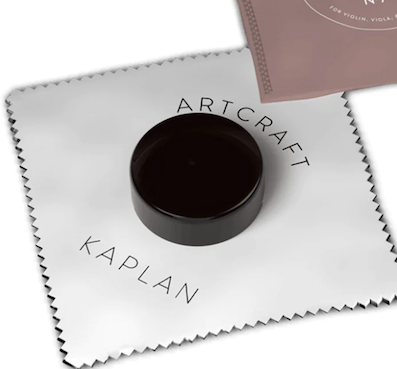
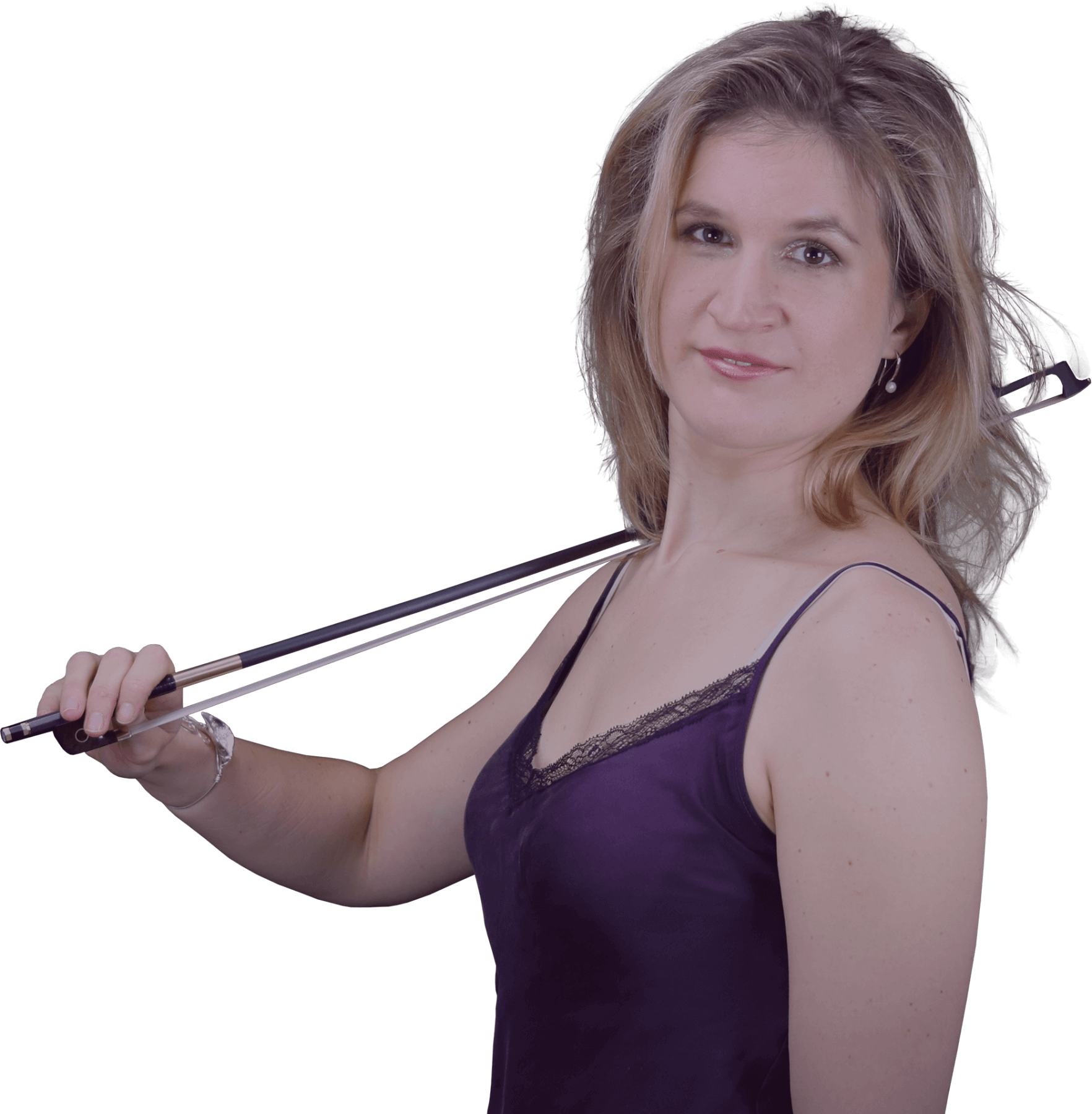
0 Comments